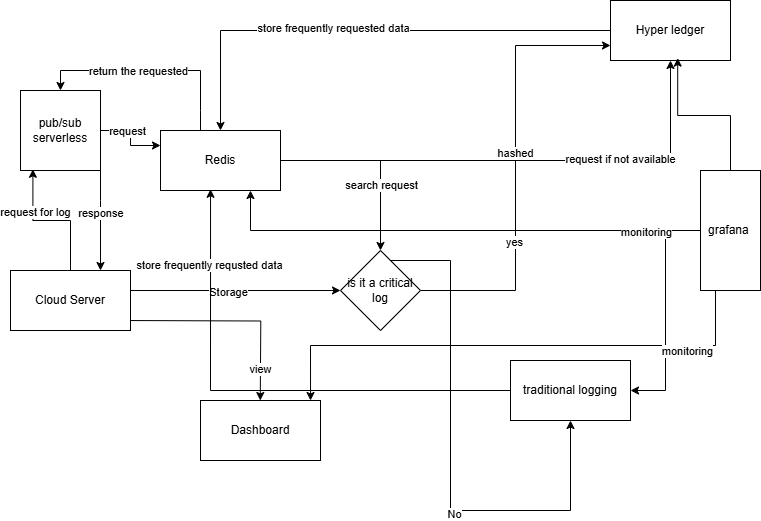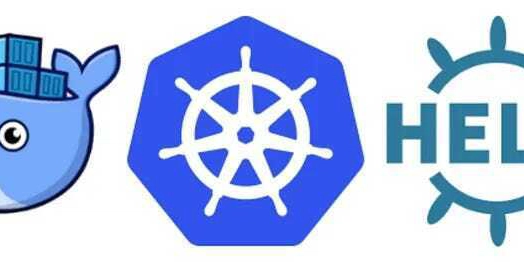Sometimes Your Home Server Needs More Power
Almost a year ago, I wrote about why you should have a Home Server to call your own. Well, funny story - my wife laughed a lot seeing the credit card bills - turns out I may have underestimated how addictive and freeing self-hosting can be. That Raspberry Pi 4 setup I mentioned? It was great... until it wasn't. There were a lot of problems with it from the beginning, problems that I decided to ignore until it started biting my beautiful and molded by the god's ass. The Path to Po-po-powah!!!! - or "Why I Needed More" My journey with the Raspberry Pi started simple enough - some file sharing here and there, a few Docker containers, and maybe a Plex server for my totally legitimate media collection. But like any good tech project, things escalated quickly: The RPi4 doesn't have native Sata connections. So, I had to use a USB connection to plug into an external storage that was able to hold 5 HDDs of high capacity. It worked, until I noticed that simple things like moving large files took ages. Watching 4k movies stored in external HDDs requires lots of patience. Create and access dockerized apps on external disks? It's a gamble. Also, in case of a blackout, even for a few minutes, could mean hours trying to make the RPi recognize the disks correctly, or even not recognizing them at all. PhotoPrism started choking while trying to index my 2 decades' worth of memes and photos. At some point, I just decided to stop PhotoPrism container from even initializing. Docker containers began fighting for that precious 8 GB of RAM, and decoding even some 1080p videos with more "unorthodox" codex proved a challenge. I could hear the Pi begging for mercy My "just one more container" addiction may have gotten seriously out of hand. And let's not even talk about that time I tried to run an AI environment alongside everything else. The poor Pi was doing its best, but even with the simplest LLM model, it was like asking a bicycle to compete in an F1 race. More Power to the People (Well, Just Me Actually) Here's a little trivia about me: I'm totally against the concept of "the pricier, the better". I want things that solve problems for me, at the best price possible, and with the minimum workaround possible. You can say "just buy a rack, a lot of high-end mini pcs, a router, and stuff everything in there", but that doesn't work for me. Buying a huge and heavy "gaming" case won't work either. I wanted something that could be powerful enough, and easier to apply upgrades compared to RPi, but I wanted a small server, something that I could leave in small places. After much research and maybe a little too much time on Reddit, I built my new server with a Jonsbo N4 case and a relatively powerful motherboard/processor. The N4 case would allow me to use 6 HDDs and 2 SSDs, and I'm not even counting the two NVME slots in the motherboard. With this, I could have: A proper CPU that doesn't scream like a maniac when I try to decode a 4k movie at the same time my wife uploads some documents. Enough RAM to handle my growing collection of Docker containers Fast storage that doesn't make me wait ages for my files The ability to run an AI assistant without everything grinding to a halt The Real Benefits are the friends we make along the way Development Environment Heaven Remember when I said you could use a home server for development? Well, now I can run multiple environments simultaneously without breaking a sweat. Node.js here, PHP there, and maybe a Python project just for fun - all running at the same time without fighting for resources. Media Management That Actually Works PhotoPrism now indexes my photos in minutes instead of days. Plex and Jellyfing transcoding happens in real-time, and the processor doesn't even reach 50% of usage. Running *arr (you know what I'm talking about

Almost a year ago, I wrote about why you should have a Home Server to call your own. Well, funny story - my wife laughed a lot seeing the credit card bills - turns out I may have underestimated how addictive and freeing self-hosting can be.
That Raspberry Pi 4 setup I mentioned? It was great... until it wasn't. There were a lot of problems with it from the beginning, problems that I decided to ignore until it started biting my beautiful and molded by the god's ass.
The Path to Po-po-powah!!!! - or "Why I Needed More"
My journey with the Raspberry Pi started simple enough - some file sharing here and there, a few Docker containers, and maybe a Plex server for my totally legitimate media collection. But like any good tech project, things escalated quickly:
The RPi4 doesn't have native Sata connections. So, I had to use a USB connection to plug into an external storage that was able to hold 5 HDDs of high capacity. It worked, until I noticed that simple things like moving large files took ages. Watching 4k movies stored in external HDDs requires lots of patience. Create and access dockerized apps on external disks? It's a gamble. Also, in case of a blackout, even for a few minutes, could mean hours trying to make the RPi recognize the disks correctly, or even not recognizing them at all.
PhotoPrism started choking while trying to index my 2 decades' worth of memes and photos. At some point, I just decided to stop PhotoPrism container from even initializing.
Docker containers began fighting for that precious 8 GB of RAM, and decoding even some 1080p videos with more "unorthodox" codex proved a challenge. I could hear the Pi begging for mercy
My "just one more container" addiction may have gotten seriously out of hand.
And let's not even talk about that time I tried to run an AI environment alongside everything else. The poor Pi was doing its best, but even with the simplest LLM model, it was like asking a bicycle to compete in an F1 race.
More Power to the People (Well, Just Me Actually)
Here's a little trivia about me: I'm totally against the concept of "the pricier, the better". I want things that solve problems for me, at the best price possible, and with the minimum workaround possible. You can say "just buy a rack, a lot of high-end mini pcs, a router, and stuff everything in there", but that doesn't work for me. Buying a huge and heavy "gaming" case won't work either. I wanted something that could be powerful enough, and easier to apply upgrades compared to RPi, but I wanted a small server, something that I could leave in small places. After much research and maybe a little too much time on Reddit, I built my new server with a Jonsbo N4 case and a relatively powerful motherboard/processor. The N4 case would allow me to use 6 HDDs and 2 SSDs, and I'm not even counting the two NVME slots in the motherboard. With this, I could have:
- A proper CPU that doesn't scream like a maniac when I try to decode a 4k movie at the same time my wife uploads some documents.
- Enough RAM to handle my growing collection of Docker containers
- Fast storage that doesn't make me wait ages for my files
- The ability to run an AI assistant without everything grinding to a halt
The Real Benefits are the friends we make along the way
Development Environment Heaven
Remember when I said you could use a home server for development? Well, now I can run multiple environments simultaneously without breaking a sweat. Node.js here, PHP there, and maybe a Python project just for fun - all running at the same time without fighting for resources.
Media Management That Actually Works
PhotoPrism now indexes my photos in minutes instead of days.
Plex and Jellyfing transcoding happens in real-time, and the processor doesn't even reach 50% of usage. Running *arr (you know what I'm talking about












































































































































































![[The AI Show Episode 142]: ChatGPT’s New Image Generator, Studio Ghibli Craze and Backlash, Gemini 2.5, OpenAI Academy, 4o Updates, Vibe Marketing & xAI Acquires X](https://www.marketingaiinstitute.com/hubfs/ep%20142%20cover.png)



























































































































![[DEALS] The Premium Learn to Code Certification Bundle (97% off) & Other Deals Up To 98% Off – Offers End Soon!](https://www.javacodegeeks.com/wp-content/uploads/2012/12/jcg-logo.jpg)


![From drop-out to software architect with Jason Lengstorf [Podcast #167]](https://cdn.hashnode.com/res/hashnode/image/upload/v1743796461357/f3d19cd7-e6f5-4d7c-8bfc-eb974bc8da68.png?#)








































































































.png?#)

































_Christophe_Coat_Alamy.jpg?#)
 (1).webp?#)





































































































![Apple Considers Delaying Smart Home Hub Until 2026 [Gurman]](https://www.iclarified.com/images/news/96946/96946/96946-640.jpg)
![iPhone 17 Pro Won't Feature Two-Toned Back [Gurman]](https://www.iclarified.com/images/news/96944/96944/96944-640.jpg)
![Tariffs Threaten Apple's $999 iPhone Price Point in the U.S. [Gurman]](https://www.iclarified.com/images/news/96943/96943/96943-640.jpg)




































































































































